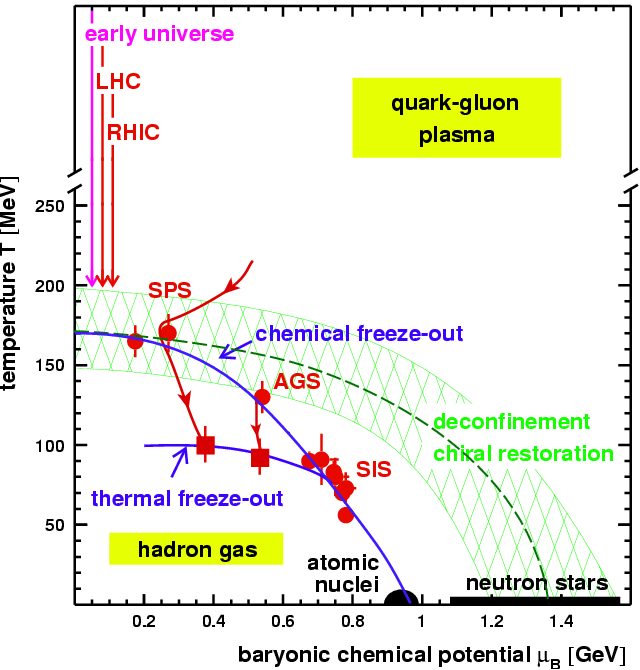
Our current understanding on the evolution of heavy ion collisions


|
|

|
High energy heavy ion collisionsTheory predicts that heating or compressing normal nuclear matter results in deconfined quark-gluon matter when the temperature and density are above a critical value. The constituents of normal nuclear matter, a system at low temperature and density, are hadrons (p, n, pions, Deltas...) while the constituents of quark-gluon matter are quarks (u, d, s... in 3 colours) and gluons in a deconfined state. In the laboratory sufficient heating and compression is reached in collisions of heavy ions at high energies to produce quark-gluon matter. |

|
 |
The phase diagramThe temperature and density attained in heavy-ion collisions at the SPS allow to place our measurements in the general phase diagram of nuclear matter. As water comes in different phases (solid, liquid, gas), so nuclear matter can come in its normal hadronic form and at sufficiently high temperature and density, in the form of a deconfined state of quarks and gluons. While previous experiments (at SIS and AGS) approached the transition region between the two phases (indicated by the green hatched region), the SPS experiments got the first real glance of it. Also shown is a likely expansion trajectory of the ``fireball'' formed in Lead on Lead collisions at the SPS. |
See Image Library for ps file format of the figures.